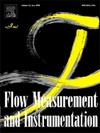Investigation of particle reconstruction quality for three-dimensional light field PIV
IF 2.3
3区 工程技术
Q2 ENGINEERING, MECHANICAL
引用次数: 0
Abstract
This study presents a comprehensive investigation into the reconstruction quality factor, a critical metric for assessing particle position reconstruction accuracy in light field particle image velocimetry (LF-PIV). Key factors influencing the reconstruction quality are analyzed, and a benchmark criterion for reconstruction quality is proposed to ensure high-accuracy three-dimensional flow measurement. Numerical reconstructions of random particle and 3D displacement fields are performed to optimize the tomographic and deep learning reconstruction approaches. Strategies for generating optimal datasets for deep learning models are presented. The findings indicate that the generation of ghost particles and the omission of true particles are the primary causes of low reconstruction quality. The latter has a more noticeable impact, particularly when ghost particle intensities are significantly lower than true particles. A reconstruction quality factor of above 0.7 is recommended for reliable, high-accuracy flow measurements. Learning-based methods outperform tomographic algorithms in particle reconstruction, achieving comparable reconstruction accuracy with a single light field camera (LFC) to that of tomographic methods using dual LFCs. To generate high-quality datasets for deep learning, an optimal angular separation of 0.01° between sampling rays, a seeding density range of 0∼1 particle per microlens, and variable particle peak intensities are suggested. Additionally, incorporating noise at 10 % of the image intensity standard deviation into training data significantly enhances model robustness.
三维光场PIV的粒子重建质量研究
本文对光场粒子图像测速(LF-PIV)中评价粒子位置重建精度的关键指标——重建质量因子进行了全面的研究。分析了影响重建质量的关键因素,提出了重建质量的基准准则,以保证三维流量测量的高精度。为了优化层析和深度学习重建方法,对随机粒子和三维位移场进行了数值重建。提出了为深度学习模型生成最优数据集的策略。研究结果表明,鬼粒子的产生和真粒子的缺失是导致重建质量不高的主要原因。后者具有更明显的影响,特别是当鬼粒子强度明显低于真粒子时。对于可靠、高精度的流量测量,建议重建质量系数大于0.7。基于学习的方法在粒子重建方面优于层析算法,使用单光场相机(LFC)实现的重建精度与使用双光场相机的层析方法相当。为了生成用于深度学习的高质量数据集,建议采样射线之间的最佳角间距为0.01°,每个微透镜的播种密度范围为0 ~ 1个粒子,以及可变粒子峰值强度。此外,在训练数据中加入10%图像强度标准差的噪声显著增强了模型的鲁棒性。
本文章由计算机程序翻译,如有差异,请以英文原文为准。
求助全文
约1分钟内获得全文
求助全文
来源期刊

Flow Measurement and Instrumentation
工程技术-工程:机械
CiteScore
4.30
自引率
13.60%
发文量
123
审稿时长
6 months
期刊介绍:
Flow Measurement and Instrumentation is dedicated to disseminating the latest research results on all aspects of flow measurement, in both closed conduits and open channels. The design of flow measurement systems involves a wide variety of multidisciplinary activities including modelling the flow sensor, the fluid flow and the sensor/fluid interactions through the use of computation techniques; the development of advanced transducer systems and their associated signal processing and the laboratory and field assessment of the overall system under ideal and disturbed conditions.
FMI is the essential forum for critical information exchange, and contributions are particularly encouraged in the following areas of interest:
Modelling: the application of mathematical and computational modelling to the interaction of fluid dynamics with flowmeters, including flowmeter behaviour, improved flowmeter design and installation problems. Application of CAD/CAE techniques to flowmeter modelling are eligible.
Design and development: the detailed design of the flowmeter head and/or signal processing aspects of novel flowmeters. Emphasis is given to papers identifying new sensor configurations, multisensor flow measurement systems, non-intrusive flow metering techniques and the application of microelectronic techniques in smart or intelligent systems.
Calibration techniques: including descriptions of new or existing calibration facilities and techniques, calibration data from different flowmeter types, and calibration intercomparison data from different laboratories.
Installation effect data: dealing with the effects of non-ideal flow conditions on flowmeters. Papers combining a theoretical understanding of flowmeter behaviour with experimental work are particularly welcome.
 求助内容:
求助内容: 应助结果提醒方式:
应助结果提醒方式:


